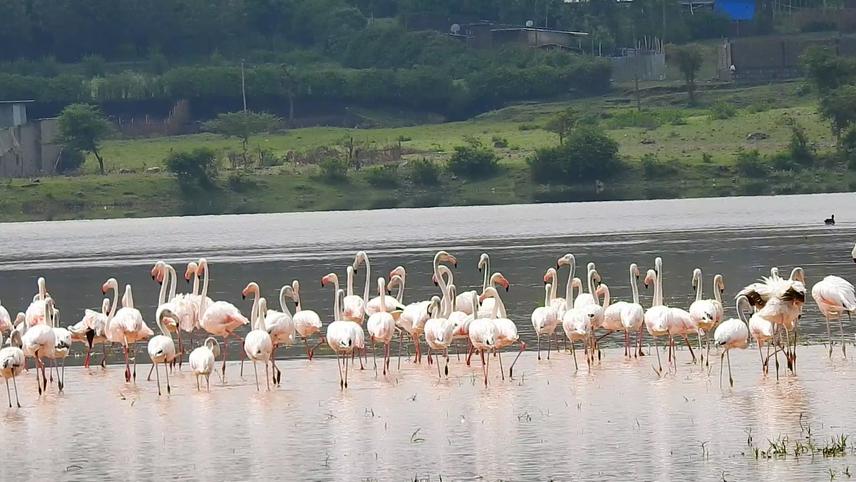Social media video featuring the project.
Below:
Disturbed flamingos
Enhancing Local Community-based Conservation: an Effective Strategy to Conserve Lesser Flamingo Habitat in Chelekleka Wetland in Bishoftu, Ethiopia
The project entitled “Effects of Land Use Land Cover Changes on Population Dynamics and Feeding Ecology of Lesser Flamingo (Phoeniconaias minor) in Chelekleka Wetland, Ethiopia”, part of my Ph.D. thesis, is being supervised by Prof. Afework Bekele and Dr. Bezawork Afework from Addis Ababa University, Ethiopia. The main subjects of the project are the highly degraded Chelekleka wetland (Gessesse and Bewket, 2014) due to natural and mainly anthropogenic activities and Near Threatened Lesser Flamingo in which its population is declining due to soda-ash mining and hydroelectric power schemes, water pollution, and malnutrition (BLI, 2018).

Flock of Lesser and Greater flamingos. © Mebrat Teklemariam.
Chelekleka wetland, recognized as an Important Bird Area, is part of the Ethiopian Rift Valley ecosystem with diverse flora and is home to hundreds of bird species, including endemics and flamingo species. The area attracts many water birds following the Palaearctic migration during the months from September to February (Ethiopian Wildlife and Nature History Society, 2010).
The entire project will last about 21 months and gathering comprehensive ecological and land use land cover patterns data have of paramount significance to increase the knowledge base to assess the conservation status of species and their habitat. This project is a timely opportunity to provide novel insights and generate up-to-date scientific information on the land use land cover changes, feeding ecology, influences of Physico-chemical characteristics of water, nutritional composition, and quantity of the macroinvertebrate, phytoplankton, and zooplankton community on the temporal and spatial abundance of Lesser Flamingo. Different data collection methods will be employed to achieve the above aims effectively. These are ecological research methods such as direct observations, census, and limnological parameters sampling (experiment); social research methods (Observation, questionnaire, interviews, and focused group discussions), and satellite imagery.
The outputs of the project are crucial to building up conservation capacity and developing to identify better conservation needs and priorities. It will help to initiate, develop, and implement appropriate conservation action plans and strategies to advance conservation attention in a way to improve the conservation status of the species and the wetland through threats mitigation and achieving sustainable human-species-wetland interactions. Outputs of the project will be disseminated to the stakeholders, conservationists, governmental bodies, and local communities to create awareness on the status, threats, and fate of the species and the wetland for their sustainable conservation through awareness campaigns, discussions, and publications.